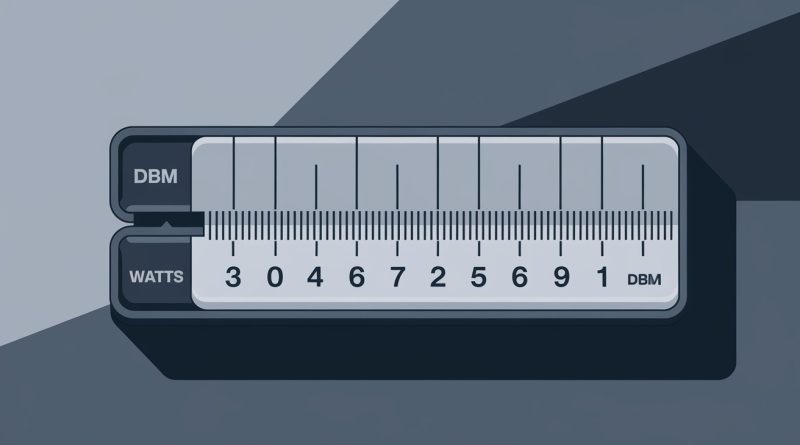Understanding dBm to Watts: A Comprehensive Guide
Simplifying Power Conversion Between dBm and Watts
When dealing with electrical power measurements, especially in the fields of telecommunications, radio frequency (RF) engineering, and electronics, you may often encounter two commonly used units: dBm (decibel-milliwatts) and watts. Understanding how to convert between these units is essential for optimizing systems, analyzing performance, and ensuring accurate signal transmission. This article explains what dBm to watts are, how they relate, and provides a step-by-step guide for conversion.
What is dBm?
dBm is a logarithmic unit of power measurement that expresses the ratio of a given power level to 1 milliwatt (mW). It is widely used in RF engineering because logarithmic scaling simplifies the representation of very large or small power levels.
What is a Watt?
Watts (W) are the SI (International System of Units) standard unit for measuring power, representing the rate at which energy is transferred or converted. In electrical systems, power is often expressed in watts to quantify energy use or generation.
Why Convert Between dBm and Watts?
In practical applications, understanding the relationship between dBm and watts allows engineers and technicians to:
- Design and Optimize Systems: Ensure the appropriate signal strength for antennas, amplifiers, and receivers.
- Analyze Signal Loss: Evaluate power attenuation in cables and other components.
- Ensure Compliance: Verify that transmitted signals meet regulatory power limits.
Conversion Table: dBm to Watts
Here’s a quick reference for common conversions:
| dBm Value | Power (Watts) |
|---|---|
| -30 dBm | 0.000001 W |
| -20 dBm | 0.00001 W |
| -10 dBm | 0.0001 W |
| 0 dBm | 0.001 W |
| 10 dBm | 0.01 W |
| 20 dBm | 0.1 W |
| 30 dBm | 1 W |
| 40 dBm | 10 W |
Applications of dBm to Watts Conversion
Telecommunications
In cellular networks and Wi-Fi systems, dBm is commonly used to measure signal strength. Converting to watts helps technicians understand actual power levels.
Radio Frequency (RF) Engineering
RF engineers use this conversion when designing and testing antennas, transmitters, and receivers.
Medical Devices
In devices like MRI machines and pacemakers, accurate power control ensures safety and effectiveness.
Audio Systems
dBm values help manage audio signal power to avoid distortion or equipment damage.
FAQs About dBm to Watts
Q: Why is dBm used instead of watts in some cases?
A: dBm provides a convenient logarithmic scale to represent very large or very small power levels, making it easier to compare relative power differences.
Q: Is 0 dBm equal to zero watts?
A: No, 0 dBm equals 1 milliwatt or 0.001 watts.
Q: What tools can I use for dBm to watts conversion?
A: Online calculators like those at Calculator Universe offer quick and accurate conversions.
Q: Does the conversion formula change with different frequency ranges?
A: No, the dBm to watts formula is independent of frequency.
Advantages of Understanding dBm to Watts Conversion
- Precision: Helps engineers make accurate calculations for system design.
- Scalability: Supports comparisons across wide power ranges.
- Standardization: Ensures consistent measurement and communication.
Conclusion
Converting dBm to watts is a fundamental skill in fields like telecommunications, RF engineering, and electronics. Whether you’re working on system design or troubleshooting, understanding this conversion empowers you to make informed decisions and achieve optimal results.
At Calculator Universe, we provide the tools and resources you need to simplify complex calculations, including dBm to watts conversions. Use our calculator today to save time and ensure accuracy in your projects.


